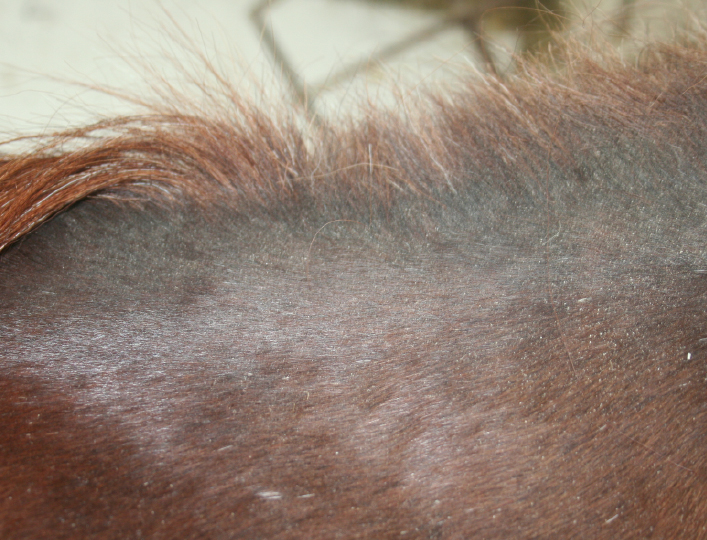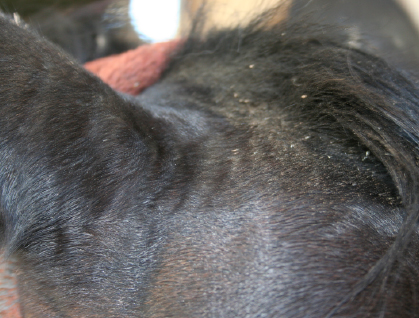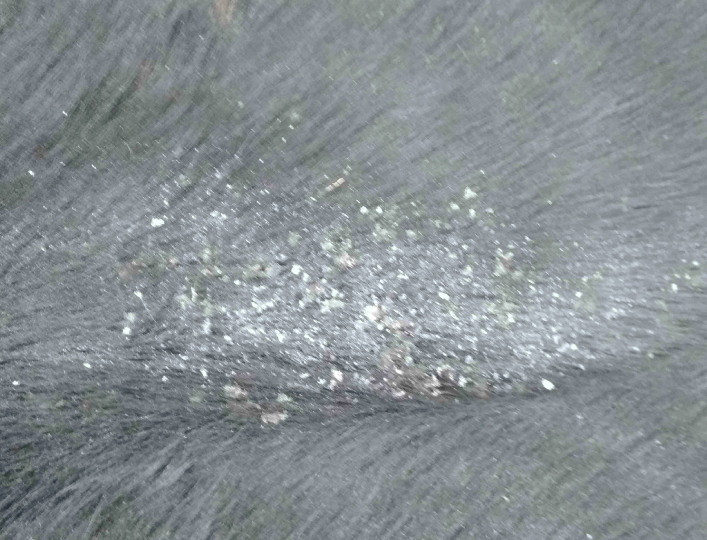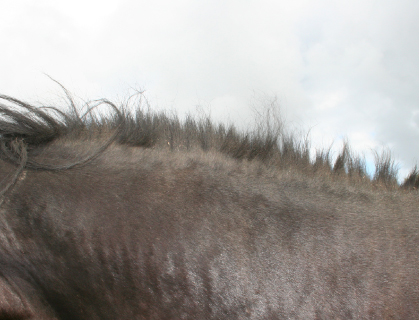The other horse sweet itch
Confusing equine dermatitis
Horse mange is similar in many ways to summer dermatitis. But the notable difference is that it can appear in any season (winter or summer) and is aggravated by the presence of insects.
The reason: dry skin linked to feeding, which attracts mites in colonies to feed on dead skin. Often localized in "shaded" areas and invisible to the naked eye, they invade the spot, causing itching and lesions in areas of dense hair such as the mane, top of the head and base of the tail....
It is, however, recognizable by the presence of a kind of "dust", white powder or small dandruff around the depilated and scratched areas, accompanied by pimples, scabs and, in the most affected cases, abrasions and thickening of the skin


The first step is to gently remove the famous "dust" and all dandruff, crusts and roughness. It's not a question of disinfecting, as this will not bring any noticeable improvement and will considerably weaken the skin.
SHAMPOO TEA TREE removes dead skin deep down, reducing the "food intake" of mites and immediately soothing the epidermis. This is why owners of horses suffering from dermatitis rarely use anti-dermatitis treatments, instead managing the problem with SHAMPOO TEA TREE. In summer, apply regularly (1-2 times a week) during periods of crisis, leaving on for 2 minutes before rinsing off.
MANAGING THE BODY
In the case of this pathology, dietary deficiencies or excesses should be considered, as they are the primary cause of this skin dryness, a "magnet" for mites.
During allergen testing, an allergy to "storage mites" is often mentioned. It should be noted that storage mites are widely present in cereals (except oats). A dietary modification in this direction should therefore be studied.
The lack of Omega and vitamin E, and sometimes biotin, is also an aggravating factor.


Avoiding skin dryness is a complicated and time-consuming undertaking, but managing diet is an essential step, because as long as dryness prevails, mites will systematically return.
Externally, moisturizing plant oils (castor oil, shea butter, sweet almond) can be very helpful, but will have no effect on the mites present, only on skin hydration.
The use of certain anti-dermatitis lotions combining moisturizing and mite repellent, such as DERFEN, may be necessary if mite populations become too high. They have an immediate effect and should be reapplied regularly (around once a week).
 ANIMADERM S.A.S
ANIMADERM S.A.S


